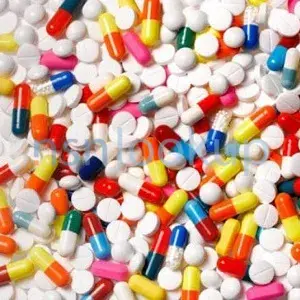Polyethylene Glycol
Item Name Code (INC) 35851
 |
 Additional Information for Polyethylene Glycol
Additional Information for Polyethylene Glycol
Polyethylene glycol (PEG) is a polyether compound that is commonly used in a variety of applications. It is a water-soluble, odorless, and non-toxic substance. PEG is formed by the polymerization of ethylene oxide, resulting in a chain of repeating ethylene oxide units.
PEG has a wide range of molecular weights, which determines its physical properties and applications. It can be a liquid or a solid, depending on its molecular weight. The lower molecular weight PEGs are liquid, while the higher molecular weight PEGs are solid waxes.
PEG is used in various industries and products, including pharmaceuticals, cosmetics, personal care products, food and beverages, and industrial applications. Some common uses of PEG include:
1. Pharmaceutical and medical applications: PEG is used as an excipient in pharmaceutical formulations, such as ointments, creams, and suppositories. It is also used as a solubilizer and stabilizer in oral and injectable medications. PEG is often used in laxatives and bowel preparations for colonoscopy procedures.
2. Cosmetics and personal care products: PEG is used in skincare products, such as creams, lotions, and cleansers, as a moisturizer and emollient. It helps to improve the texture and spreadability of these products. PEG is also used in hair care products, such as shampoos and conditioners, to enhance their performance.
3. Food and beverages: PEG is used as a food additive and is classified as a GRAS (Generally Recognized as Safe) substance by the U.S. Food and Drug Administration (FDA). It is used as a thickening agent, stabilizer, and humectant in various food and beverage products. PEG is also used in the production of food packaging materials.
4. Industrial applications: PEG is used in various industrial processes, such as lubricants, antifreeze, and heat transfer fluids. It is also used as a dispersant and emulsifier in paints, coatings, and inks. PEG is used in the production of polyurethane foams and as a mold release agent in the manufacturing of plastic and rubber products.
It is important to note that PEG can have different grades and specifications, depending on its intended use. It is always recommended to consult the specific product's safety data sheet (SDS) and follow the manufacturer's instructions for proper handling and usage.
 Related Item Names for INC 35851 Polyethylene Glycol
Related Item Names for INC 35851 Polyethylene Glycol
 NATO Stock Numbers with Item Name 35851 Polyethylene Glycol Page 1 of 1
NATO Stock Numbers with Item Name 35851 Polyethylene Glycol Page 1 of 1
- 005594665
- CARB0WAX600
- RNCC: 3 | RNVC: 1
- 331899823
- 1000766
- RNCC: 3 | RNVC: 2
- M*POLIETILENGLICOL 4000
- RNCC: 5 | RNVC: 1
- 123885177
- 817007
- RNCC: 3 | RNVC: 2
- 123035658
- POLYAETHYLEGLYKOLE
- RNCC: 2 | RNVC: 2
- 63010
- RNCC: 3 | RNVC: 2
- 331900203
- POLIETILENGLICOL CARBOWAS
- RNCC: 5 | RNVC: 1
- 1001485
- RNCC: 5 | RNVC: 1
- 012571864
- EA-P-1172-(5GL)
- RNCC: 3 | RNVC: 1
- 011749926
- P0125
- RNCC: 3 | RNVC: 2
- 010749719
- EA-P-1172
- RNCC: 3 | RNVC: 2
- 010749719-04033
- RNCC: 5 | RNVC: 2